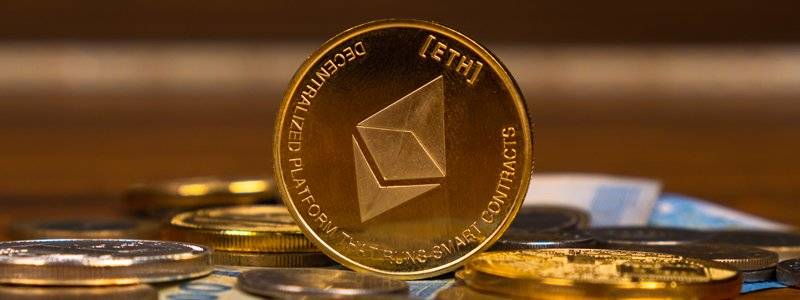
It might just be wise to take advantage of the current bullish run witnessed across leading cryptocurrencies. These weekly updates give careful analysis and predictions that you might find helpful in making decisions regarding your digital assets.

Bitcoin (BTC)
The price of Bitcoin slipped below a threshold on Monday, dropping 5% in market value the previous week and falling beneath the $22,000 level to $21,989, as bulls attempted to initiate a counter-trend attack. This resistance is reinforced by an ascending trendline dating back to 2018, which provided bullish support and bearish resistance during the 2019-2020 bull run.
On February 14, Bitcoin saw a 1.96% daily candlestick, followed by a green ‘one’ buy signal from the Momentum Reversal Indicator (MRI), which, combined with the bullish sentiment post-inflation announcement, suggests that BTC is ready to reach the supply zone extending from $22,628 to $23,350, at a minimum.
If bulls can rally and flip the $25,000 psychological level decisively, the likelihood of a $30,000 BTC will increase substantially. In such a case, the crypto market will enter a bull run phase, causing other altcoins to rally along with it.
On February 16, Bitcoin witnessed a consolidation phase after displaying the strongest bullish day in 2022, with a 10% increase in less than 24 hours on February 15. The price hovered above the 8-day exponential moving and 21-day simple moving averages (SMA), indicating that day traders on lower time frames are building their positions.
As of now, Bitcoin trades near the stiff overhead resistance at $25,211, and the small trading range days on February 18 and 19 suggest that bulls are not in a hurry to book profits, and bears are wary of shorting at current levels. The upsloping moving averages and the relative strength index (RSI) near the overbought territory indicate that bulls are firmly in command. If buyers can catapult the price above $25,250, the BTC/USDT pair could accelerate to $31,000 with no major resistance in between.
However, if the price falls from the current level, it could find support at the 20-day exponential moving average ($23,115). The bears would need to pull the price below $22,800 to break the bullish momentum, and the pair may then collapse to $21,480, which is likely to act as strong support.

Ethereum (ETH)
The exponential moving average was being retested on February 14th, causing Ethereum to increase by 3%. Traders were hoping for a bullish trade setup that could lead Ethereum to a new year-to-date high, as it appeared to be forming a reversal pattern near a significant support zone. The price of Ethereum was $1,536.
In the last 24 hours, ETH has risen by 6.28% on Tuesday. Ethereum’s price may attempt to surpass the immediate obstacle at $1,579 and aim for the monthly resistance level at $1,677, and even hit the whole number of $1,700.
On Wednesday, Ethereum’s price experienced a 1% drop following an early morning surge. Like Bitcoin, Ethereum’s price is staying above both the 8- and 21-day SMAs, which is a bullish signal in the short term. The price of Ethereum was $1,655. According to various perspectives, the $1,850 area is a magnet-like liquidity level that bulls should aim for and reaching that price level would result in a 12% increase.
The quote books only recorded a minor 2% decrease in Ethereum’s price (ETH) as bulls were unable to maintain price action above $1,688 due to US PPI numbers. Several economists are warning that the US economy is at a tipping point since many confidence indicators are starting to point to very negative, contractionary results. This means that the Fed’s measures will begin to take effect with a delay.
ETH is expected to rise rapidly and surpass $1,688 again by Thursday. Expect bulls to buy risk assets across the board, with equities and cryptocurrencies leading the way near the US closing bell on Friday evening. During the weekend, bulls are expected to drive ETH’s prices up to $1,928.
The largest risk comes with the US session, which may bring another selling round in the market. Bulls are expected to step aside, and ETH’s prices could plummet to $1,500. Fortunately, there is plenty of support from the monthly pivot and the 55-day Simple Moving Average (SMA) lining up.

Ripple (XRP)
The price of XRP increased by 2% at the beginning of the week, with bullish activity taking place near the $0.36 area. On February 13th, a hammer reversal stick pattern was produced by the bulls, which prompted buyer interest in the market. This pattern is known to be a confirmed Morning Star reversal signal that can catalyze market bottoms. XRP was auctioned at a price of 0.376.
On Wednesday, the price of Ripple slipped below the resistance zone of $0.380 to $0.400 for the fourth time in the last nine months. This area has been critical for XRP bulls to overcome. XRP succumbed to profit-taking in the crypto markets, and the $0.40 level continued to act as resistance. Market conditions remain the same, and there could be a potential for a deeper decline.
On Thursday, XRP traded at a price of $0.387, and it saw a drop of over 4% due to the US PPI numbers and the strength of the US Dollar. Despite this, Ripple showed good signs of well-underpinned price action, with bulls halting the correction even before it touched the 55-day SMA near $0.38. The monthly pivot was a safety net, just in case the 55-day SMA could not hold.
XRP is now seeing bullish activity as risk appetite diverges between asset classes. While European equities are selling off and US futures are pointing to red opening numbers, cryptocurrencies are seeing green numbers. This shows the bullish appetite in XRP, and it is expected to break $0.42 to the upside over the weekend.
The risk elements for today are expected to be small as traders focus on US GDP and European inflation data. If the new numbers next week further support the concept that inflation is sticky or even rising, markets could be wrong-footed. If that is the case, expect the rally to be priced out again and see XRP dip below $0.37, with a risk of a full 7-cent drop towards $0.30.

Cardano (ADA)
On January 15, the price of Cardano experienced a notable surge of 9%, reaching a high of $0.42. This was an exciting development for the cryptocurrency market, as many investors and traders had been anticipating a rise in Cardano’s value. However, this bullish momentum was short-lived, as the current sell-off has indicated a bearish trend. While it is still unclear whether the uptrend is definitively over, traders should proceed with caution when considering Cardano’s current price levels.
As of the time of writing, Cardano’s price stands at $0.39, which represents a decline of 7% since the opening bell. The Relative Strength Index (RSI) provides further evidence of a bearish trend, as the daily outlook for Cardano reveals a bearish divergence between the new high at $0.42 and the previous range high at $0.34. This suggests that the bullish trend may be undergoing a potential reversal, with a bearish bias in the short term. As such, traders should be especially careful when making decisions related to Cardano’s price movements in the current market conditions.
Over the last seven days, the value of Cardano, a popular cryptocurrency, has appreciated significantly, surging by an impressive 15.04%. However, within the last 24 hours, there has been a minor decline of 0.05% in its price. On a more positive note, within the last hour, the price has bounced back, rising by 0.32%. At present, the current market value of one ADA, the native cryptocurrency of the Cardano blockchain, stands at $0.41. Despite its recent upswing, it’s worth noting that Cardano still has a long way to go to reach its all-time high of $3.10, which it attained during the bull run of the cryptocurrency market in May 2021. The current price is 86.89% below that all-time high. Additionally, Cardano’s circulating supply currently stands at 34,646,660,695.661 ADA.

Solana (SOL)
On February 14, the trading price of Solana surged by 4.75% and reached $21.86, hovering near the critical support level of $20.58. Last month, the altcoin experienced an impressive rise of over 170%. However, on February 9, SOL fell by 11.84% and declined towards the critical support.
As of Tuesday, Solana price seems to be trading between the two moving forces of the 55-day and 200-day Simple Moving Averages. During the day, Solana price rose by 9.29% and reached $23.77, reversing the losses of the past few sessions. The cryptocurrency broke through its immediate resistance level of $22.86, and testing it as support could result in a rise towards the critical resistance level of $28.55.
Despite a decrease in user activity on its blockchain, Solana price has climbed by 23.8% since February 13, and its rally has remained unaffected. Since the beginning of 2023, SOL has yielded gains of 162.2%. With recent bullish catalysts in the Solana ecosystem, the altcoin has the potential to maintain its 2023 gains and climb higher in Q1.
Digital Asset Insights
Copy of Digital Asset Insights #105
first appeared on trademakers.
The post Digital Asset Insights Copy of Digital Asset Insights #105 first appeared on JP Fund Services.
The post Digital Asset Insights Copy of Digital Asset Insights #105 appeared first on JP Fund Services.



































